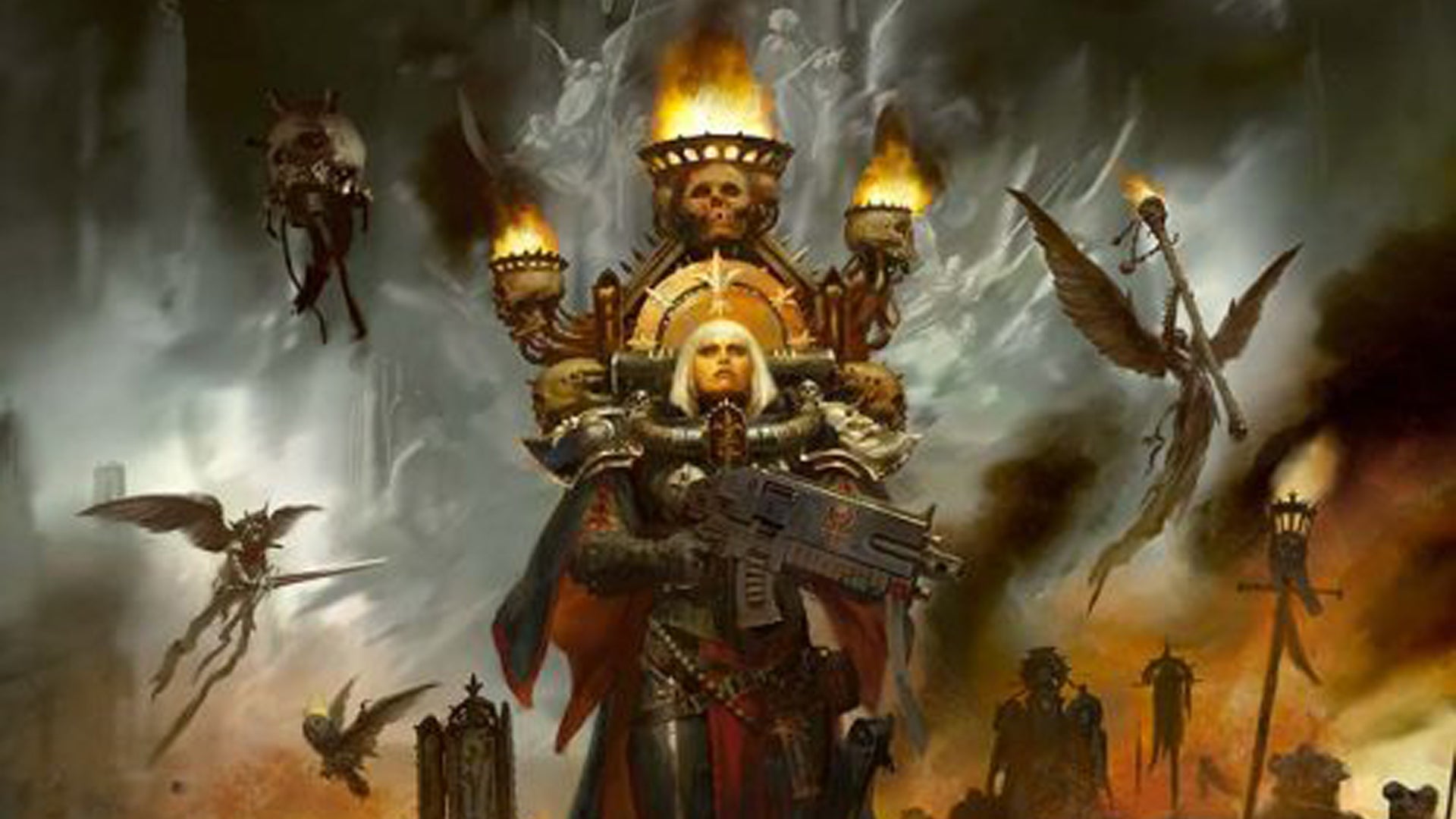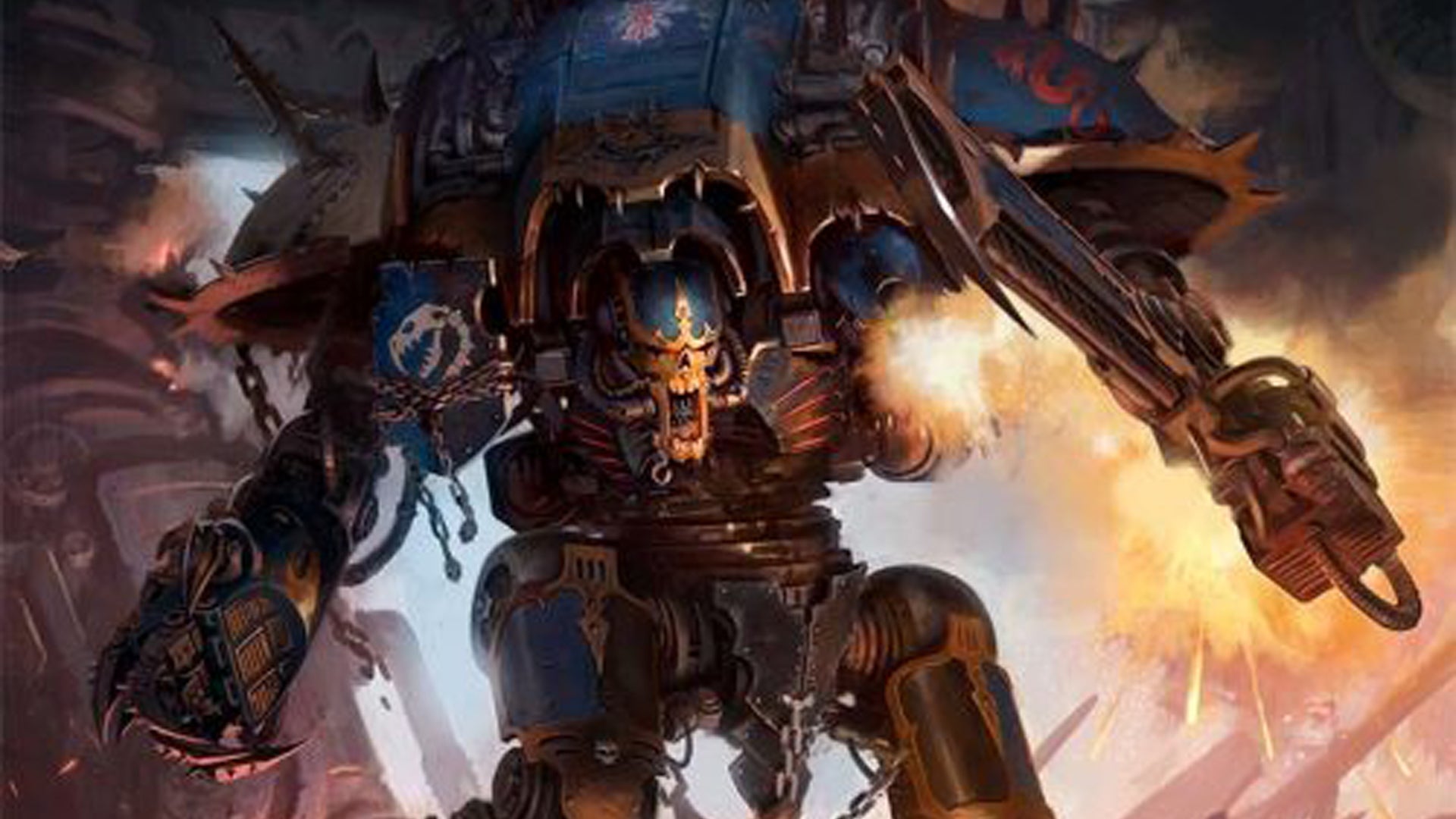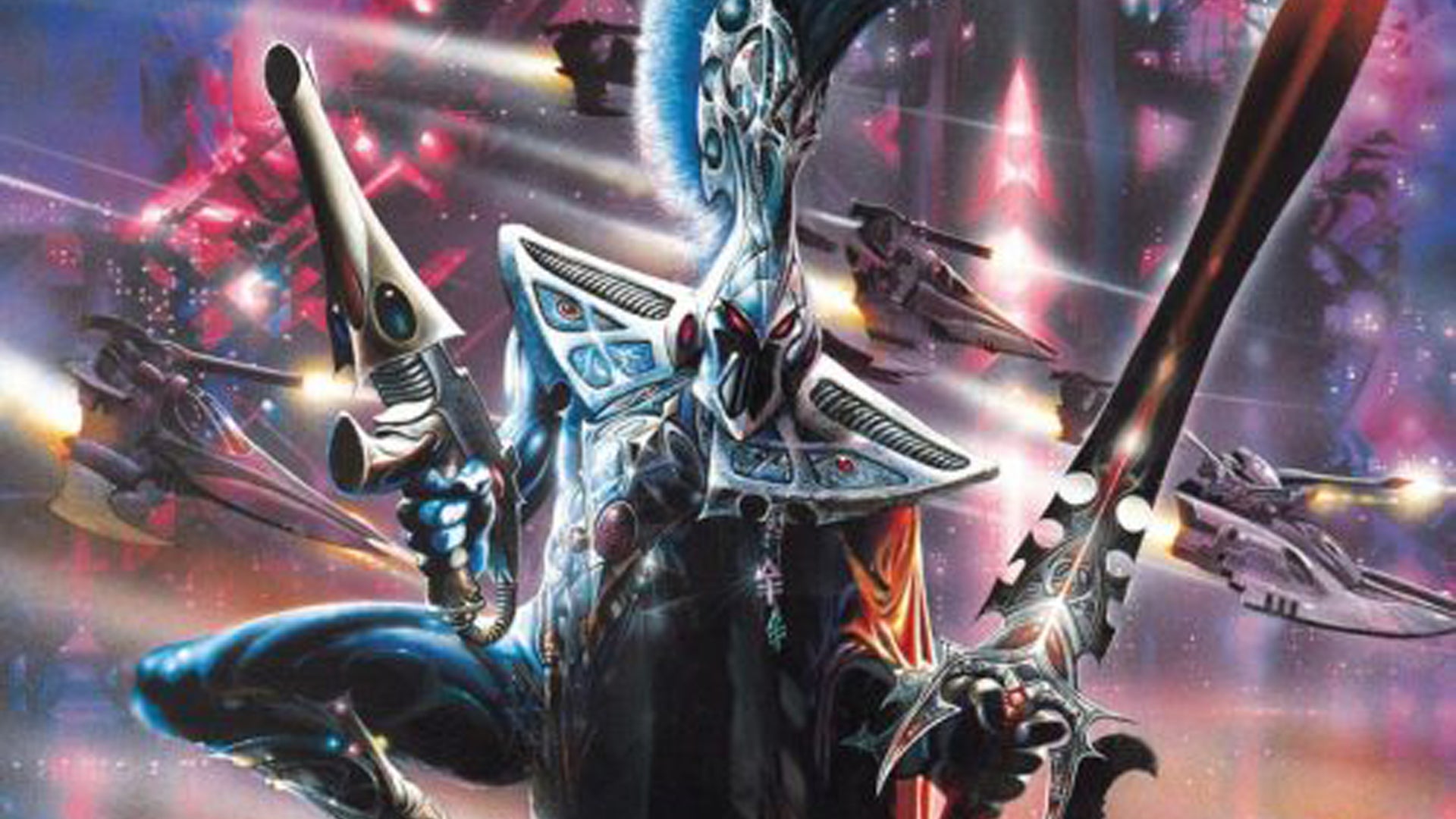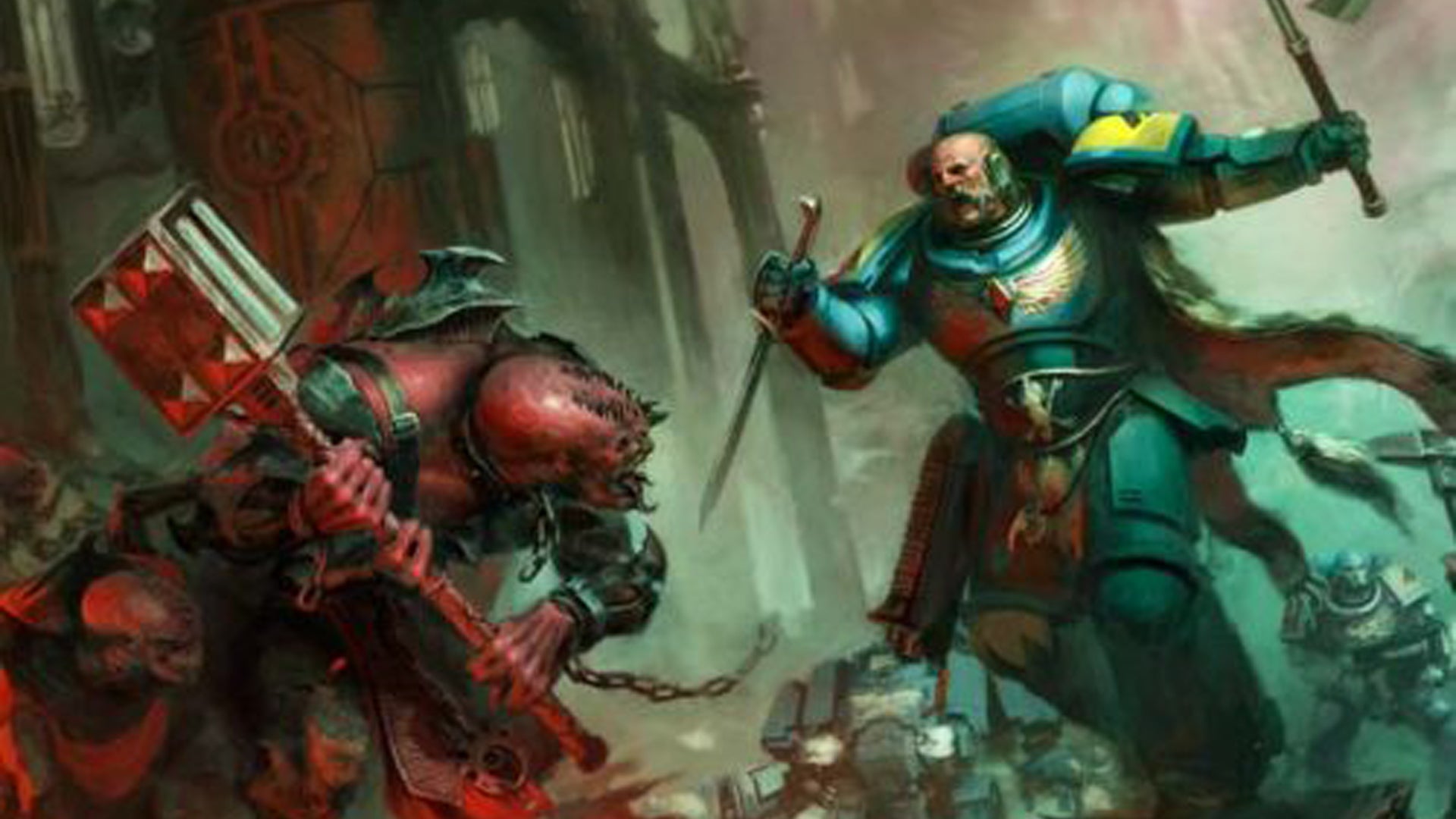what do you need to play warhammer 40k
Warhammer 40,000 is fundamentally all about war. War all the fourth dimension. War on an unknown scale. Its tagline is "In the grim darkness of the futurity, there is only state of war," which is very economic scene-setting: you engage with the game and its rich fiction by enacting miniature war on your tabletop. And it's a whole lot of fun.
If you have managed to avoid its numerous video game adaptations, or its ubiquity in the tabletop miniatures scene for more than 3 decades, Warhammer 40,000 is Games Workshop'southward flagship tabletop wargame and the sibling to the fantasy-flavoured Warhammer: Age of Sigmar.
Designed and manufactured in the UK, it has a different feel to many other tabletop games as it is steeped in over 30 years of fiction and world-building. It provides players and hobbyists alike a rich seam of fiction to depict on in order to build, pigment and play with peerless models.
How practise you play Warhammer xl,000?
Warhammer xl,000 is a tabletop wargame that sees yous playing battles on a tabletop, ideally with miniatures that y'all accept built and painted yourself.
Currently in its eighth edition, it is a much more streamlined game than it used to exist, congenital around playing relatively fast objective-based matches which involve rolling a whole lot of die, measuring distances and using your faction'southward unique rules to enact synergies and tactics to best your opponent.
You'll face off against an opponent with a strength which could be a couple of units or a sprawling army. In a given turn you will choice units to motility, utilize psychic powers, shoot from your gunline and finally accuse, and attack. You'll utilise rulers and dice to measure distances and successes. In each game y'all'll have a express pool of control points with which to enact game-changing Stratagems to boost the effectiveness of your units at fundamental times.

Though many will contend that Warhammer 40,000 comes alive as a competitive game, Games Workshop attempts to support both Open up and Narrative play - though in my experience the sugariness spot exists somewhere between competitive and Narrative and finding good people to play against who match your enthusiasm and expectations is a must.
Open up is as it suggests: an opportunity to put anything on the table, dropping and adding rules as you lot and your opponent see fit. Narrative acts equally a alloy of both of these, simply focuses on quasi-historical battles based on the fiction,forgoing balance for the cinematic bombast of doomed sieges and exhilarating infiltrations. Games Workshop analyses and refreshes its points for matched play every yr with a supplement known as Chapter Approved, which also tweaks rules for various armies.
What are the Warhammer 40,000 factions?
Equally we've said, Warhammer 40,0000 is nearly state of war. In a huge galaxy teeming with a surplus of life, state of war grinds all to dust. Its Ur image is the skull - an abundance of ivory craniums being crushed under boots, treads or nefarious conflicting limbs.
On the tabletop, and in the fiction, the forces at piece of work are largely split into iii sides: the Imperium, the forces of Anarchy and the remaining Xenos factions.
The Imperium
The Imperium represents humanity, twisted and broken, a lumbering theocratic fascist empire shattered by betrayal. Well-nigh of mankind worships the Emperor - a superhuman being that once unified the human race in a k cause to the stars, commanding multiple legions of loyal Space Marines: towering genetic supersoldiers bred only for war.
Space Marines are the quintessential 40K faction: towering soldiers in powered armour who adorn themselves in quasi-religious symbology. They come up in diverse flavours, from the vaguely Greco-Roman Ultramarines to the more than esoteric Blood Angels and Space Wolves, blood-drunk pretty-boy infinite vampires and drunken, brawling werewolf vikings respectively.
Supporting the Space Marines are the Astra Millitarum. Endless regiments of guardsmen and legions of tanks and warplanes rain downwards enormous volumes of firepower against the enemies of the Imperium - they are a faction of immense quantity rather than quality.
Mars, now a behemothic munitions factory, is ruled over by the Adeptus Mechanicus. They worship the Cult of the Automobile creating the virtually mortiferous warmachines of the Empire, using ancient near-forgotten blueprints they revere as holy texts.
Whilst Warhammer xl,000 in full general struggles with multifariousness and female representation, 1 of the token rebuttals are the Sisters of Battle, an ecclesiarchical force of Battle Nuns who purge their enemies with faith, fury, and huge gouts of flame.

The Forces of Anarchy
In the Warhammer universe, both the fantasy Age of Sigmar and futuristic 40K, there exist the ruinous powers. Four gods brought into existence by the psychic tendencies of sentient races. They are Khorne: State of war and Bloodshed, Tzeentch: Alter and Magic, Nurgle: Entropy and Disuse, and Slaanesh: Perfection and Temptation.
In Warhammer 40,000, they exist within The Warp - a dimension that can be used for cross-space travel. Many in humanity worship these gods and are gifted horrendous powers and mutations in reward, allying themselves with the Traitor Legions - Infinite Marines who defected from the Imperium in the Horus Heresy - a schism formed between the diverse Infinite Marine capacity leading to a long drawn out war that broke the Imperium in one-half.
The Xenos
Though the endless conflict between The Imperium and Chaos takes upward much of the narrative, the Warhammer forty,000 universe isn't without its fair share of aliens, with Xenos forces adding some much needed color to the setting.
One time a unified race, the Aeldari brutal to decadence and birthed Slaanesh, trigger-happy a gaping wound in space known as the Eye of Terror. They carve up into the Crafwotld Aeldari, those who maintain a tradition of asceticism by going to war only when it is necessarywith elegant warmachines made of living bone and frightening psychic powers, and The Drukhari: pirates who emerge from secret pathways throughout the warp in massed raiding parties, enslaving humans and aliens alike to torture in their hidden metropolis of Commoragh. Finally, the secretive Harlqeuins are roving warriors that repeatedly act out the autumn of their race in a ballet of violence.
Orkz (don't forget the Z) show Warhammer 40,000 at its most loud and fun. A brawling mass of brutish warriors and madcap scientists enact mighty Waaaaghs, building crude weapons and warmachines that function through pure willpower alone, never happier than when they're conveying enough dakka (firepower) to topple a whole army.
Based on 60 minutes Geiger's xenomorphs in the Alien movies, Tyranids are a locust swarm, turning biomatter into fuel for their armies which bladder from planet to planet, blotting out the stars with their numbers. Their gestalt consciousness also manifests itself in the minds of many as a godlike entity, causing Genestealer Cults to be seeded in accelerate of the main fleet'southward arrival, sowing anarchy and disorder.

Long before the Aeldari fell, they battled the Necrons, a race who were tricked into sacrificing flesh for living metallic bodies, resurfaced from ancient Tomb Worlds to repossess the galaxy, their implacable advance bolstered by horrendous anit-affair weaponry.
Last merely not to the lowest degree, the T'au Empire is positioned equally the youngest and the near avant-garde faction in all of 40K, waging war with fleets of drones and high-powered battlesuits.
How expensive is Warhammer xl,000?
It's no lie that it is an expensive hobby, but it tin also be an incredibly fulfilling one. The sense of accomplishment yous can get from making an army, painting it and fielding it on the tabletop is second to none. Information technology's very hard to overstate the feeling you can derive from building and painting a force. When I compare my own feel with Warhammer versus board gaming, I go a lot more out of my money with Warhammer, primarily because I spend a lot of fulfilling time painting - an of import consideration to make.
The bare minimum you'll need to play is the current Warhammer xl,000: 8th Edition rulebook (£30), the codex rules (£30) for your called faction, and the miniatures and accessories needed to play on the table tiptop. The current eighth edition is fairly skilful at representing small skirmishes all the manner upward to large battles, and it's very piece of cake to pick upwards one of Games Workshop's generously-priced Start Collecting! boxes and have a fun, if peradventure imbalanced, fourth dimension on the tabletop. One of these will gear up y'all back around £50 to £threescore, merely will net yous a HQ, a troop choice, and a big fun model such as a tank or walker.
40K has quite a flexible listing-building system, supported by a cost organisation of either ability level or more granular, balanced points. It's relatively simple to catch a few kits and bash together a fun army, and I'd encourage people to get at least a HQ (around £12 to £25) and a few troop squads (£20 to 30 for ten models) and play a few games with power levels before adding more than moving parts later. Don't concern yourself with dropping hundreds on a fully-formed 2,000-bespeak army (the competitive standard) and instead enjoy the dull growth of your force.

Currently the near toll-effective style to play is to get into Space Marines or the Death Guard as the current starter sets (priced from £20 to £90) are based around these two armies, perfect for splitting betwixt ii players. Space Marines besides accept the benefit of existence the nigh well supported faction, with access to a large array of fun and thematic rules based on their fiction.
If getting into the full game of Warhammer xl,000 is daunting for you in whatsoever way, but you lot enjoy the fiction, at that place is likewise Kill Team: a more granular squad-based game that is playable with a rulebook (£25) and a single team of troops. I'd advise getting the Arena set up for new players equally its board-based gainsay does a lot to alleviate the demand for terrain which, whilst immersive and keen to play with, can be inconvenient from both a price and storage perspective.
The scope for building armies in 40K is much broader than in Age of Sigmar, and as such in that location are many valid ways to engage in the hobby. You can build a agglomeration of highly personalised Kill Teams of diverse factions, or you can go all in and attempt and create a sprawling detachment of one of your favourite canon armies. Either way, there are lots of exciting communities out in that location to become involved with, but it'due south important to think long and hard about what you desire from the hobby. For me, it's a gamble to get away from the constant focus on screens, and to work out a creative itch in a way that gives me a tangible result. Playing is entirely ancillary to me, and it may be the reverse for you. Take your fourth dimension, and don't buy in massively without doing your research. Relish the small steps too, remember that the small stops along the way are often just as important as the destination itself. Information technology's worth keeping in mind that at the cease of the day, it is just a hobby - it'due south in that location to improve your life, non consume information technology! Y'all can exit that for the Tyranids.
Source: https://www.dicebreaker.com/categories/miniature-wargame/how-to/how-to-play-warhammer-40k
0 Response to "what do you need to play warhammer 40k"
Post a Comment